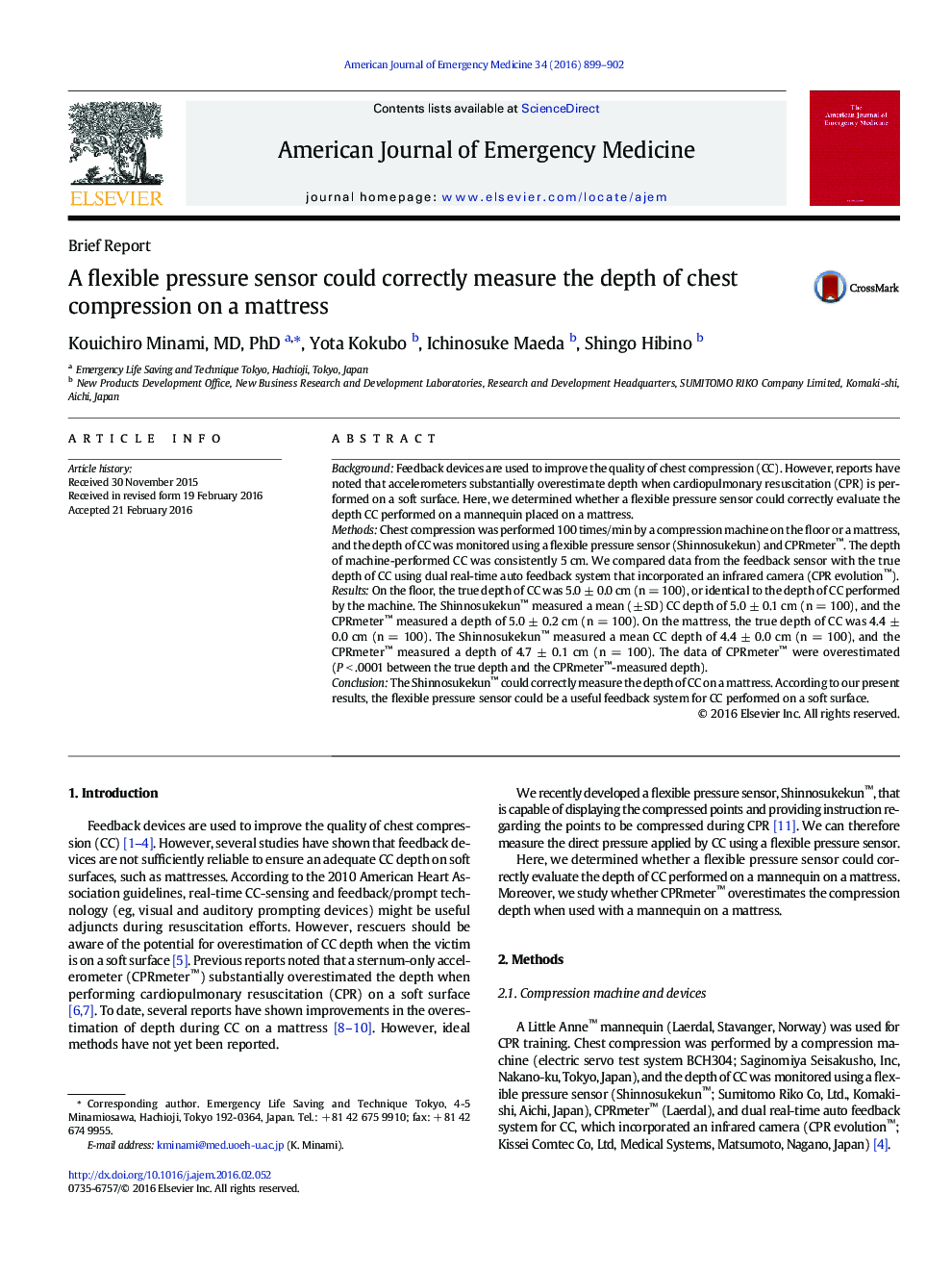| کد مقاله | کد نشریه | سال انتشار | مقاله انگلیسی | نسخه تمام متن |
|---|---|---|---|---|
| 3223309 | 1588094 | 2016 | 4 صفحه PDF | دانلود رایگان |
BackgroundFeedback devices are used to improve the quality of chest compression (CC). However, reports have noted that accelerometers substantially overestimate depth when cardiopulmonary resuscitation (CPR) is performed on a soft surface. Here, we determined whether a flexible pressure sensor could correctly evaluate the depth CC performed on a mannequin placed on a mattress.MethodsChest compression was performed 100 times/min by a compression machine on the floor or a mattress, and the depth of CC was monitored using a flexible pressure sensor (Shinnosukekun) and CPRmeter™. The depth of machine-performed CC was consistently 5 cm. We compared data from the feedback sensor with the true depth of CC using dual real-time auto feedback system that incorporated an infrared camera (CPR evolution™).ResultsOn the floor, the true depth of CC was 5.0 ± 0.0 cm (n = 100), or identical to the depth of CC performed by the machine. The Shinnosukekun™ measured a mean (± SD) CC depth of 5.0 ± 0.1 cm (n = 100), and the CPRmeter™ measured a depth of 5.0 ± 0.2 cm (n = 100). On the mattress, the true depth of CC was 4.4 ± 0.0 cm (n = 100). The Shinnosukekun™ measured a mean CC depth of 4.4 ± 0.0 cm (n = 100), and the CPRmeter™ measured a depth of 4.7 ± 0.1 cm (n = 100). The data of CPRmeter™ were overestimated (P < .0001 between the true depth and the CPRmeter™-measured depth).ConclusionThe Shinnosukekun™ could correctly measure the depth of CC on a mattress. According to our present results, the flexible pressure sensor could be a useful feedback system for CC performed on a soft surface.
Journal: The American Journal of Emergency Medicine - Volume 34, Issue 5, May 2016, Pages 899–902
